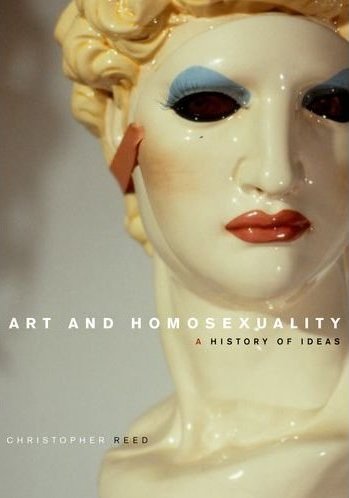
“The history of art, which is usually based on assumptions of continuity, is not easily integrated with the history of homosexuality, which is conventionally premised on alienation.”
Paul(ine) and I minced off to the venerable Gay's The Word bookshop in Bloomsbury yesterday evening for the launch of American Professor Christopher Reed’s book Art and Homosexuality: A History of Ideas, with a presentation and talk by the author. Excellent and informative stuff, indeed.
The book covers everything from ancient Greece and Rome to primitive Native American and Polynesian art, and European art from medieval times through the present. He traces the progression of the way gay (erotic and non-erotic) depictions progressed from completely acceptable (the marriage of Emperor Basil I to another man) through the idealisation of the male form in the Renaissance (Michaelangelo's David), to Caravaggio's dirty angels, to Ingres and his Achilles Receiving the Ambassadors of Agamemnon (below), to the deliberate titillation and simultaneous condemnation of homosexuality in Victorian times (culminating in the persecution of Oscar Wilde), to modernism and Tom of Finland.

Prof Reed has a particular disdain for the way that many scholars seem to link "the outsider" that is conventionally assumed to be the artist - particularly those of the so-called avant-garde movement - with the world of the homosexual. In his words:
"The institutionalisation of gay and lesbian identity into organisations seeking the political and social normalisation of homosexuality...was often marked by disavowals of flamboyantly visual manifestations of minority sexual identity. At the same time, an examination of the history of modern art from the position of the history of homosexuality explodes myths of the avant-garde as either an arena of freewheeling inventiveness or a safe haven for misfits.
On the contrary, the avant-garde often exploited homophobia to attract attention while energetically suppressing affirmative expressions of sexual deviance and policing the behaviours and beliefs of artists who aspired to its rewards. Groundbreaking visualisation of the physical and emotional bonds between people of the same sex, therefore, often originated outside the avant-garde in realms of popular culture before being appropriated as avant-garde spectacle."

This was a fascinating exploration of a subject, and we did enjoy the experience, despite Professor Reed's heavy concentration on some daft American examples of modernism (seemingly all done by friends of his).
The book itself, at £27.99, remained (sadly) out of reach of our pockets...
Art and Homosexuality - A History of Ideas
Gay's The Word bookshop
Has anyone done the Camp David joke?
ReplyDeleteI know several of those...Jx
ReplyDelete